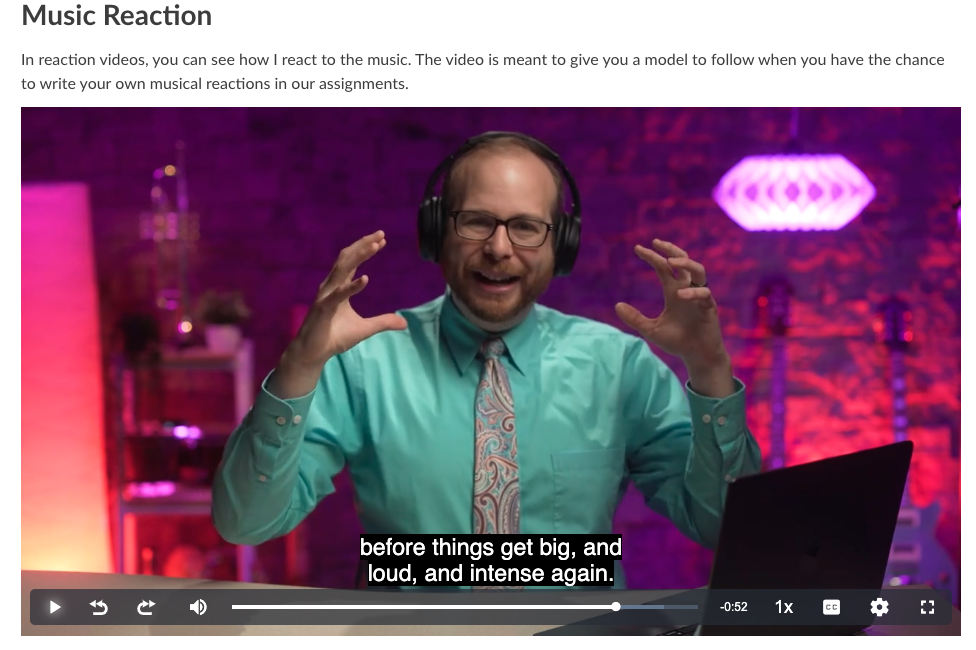Modeling Thinking with Instructor Reactions
Overview
Students watch their instructor react to a piece of music before they are asked to do the same thing in their first assignment.
Why Use This?
When instructors model their thinking to students, they help decrease students’ anxiety about whether they are doing something “correctly.” In this example, the instructor records himself listening to a piece of music while narrating his thoughts on the piece. By doing the assignment himself, the instructor shows students how the “expert” is thinking about the content or task. Students then have a trusted point of reference before attempting the assignment themselves.

Music Reaction
In reaction videos, you can see how I react to the music. The video is meant to give you a model to follow when you have the chance to write your own musical reactions in our assignments.
How Does It Work?
The instructor recorded himself listening to several different musical pieces and put his reactions into words. He also purposefully scaffolded his reactions. In his first video, he provided some general thoughts on the piece and broadly identified the musical elements he noticed. In the second video, he identified specific content from the unit in the piece. Finally, in the third video, he asked students to practice reacting to a musical piece first, then compare their reactions to his by looking for similarities and differences.
Keep In Mind
- Narrate your thoughts as you demonstrate an assignment or task. The goal is to make your thinking visible to students! If that dialogue is paired with a worked example, even better.
- Quickly use audio or video to record your thoughts; written commentary works as well.